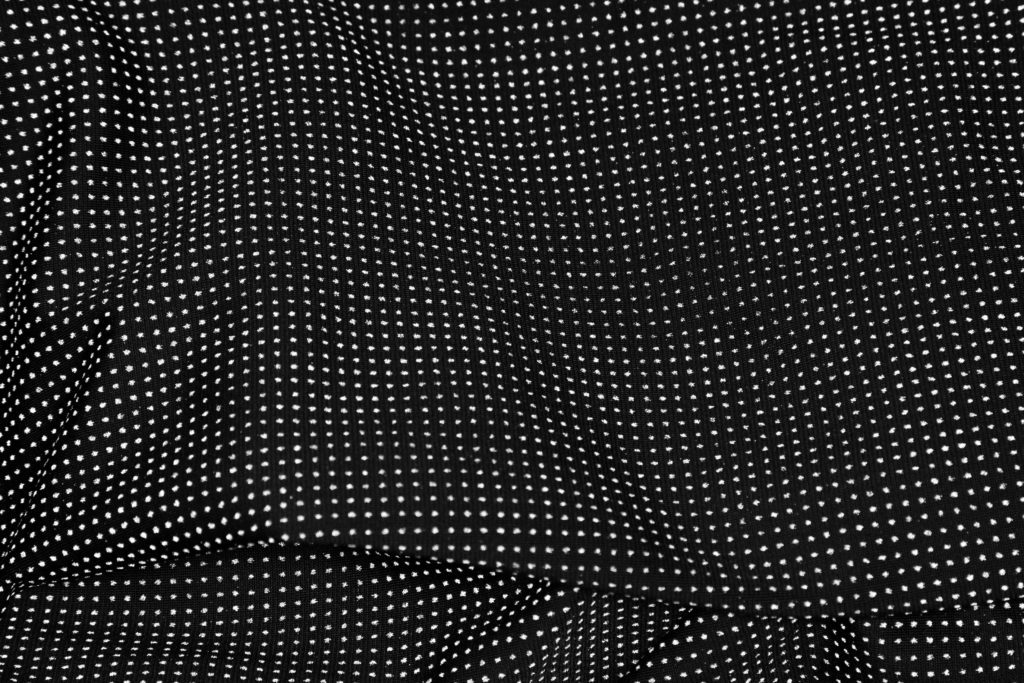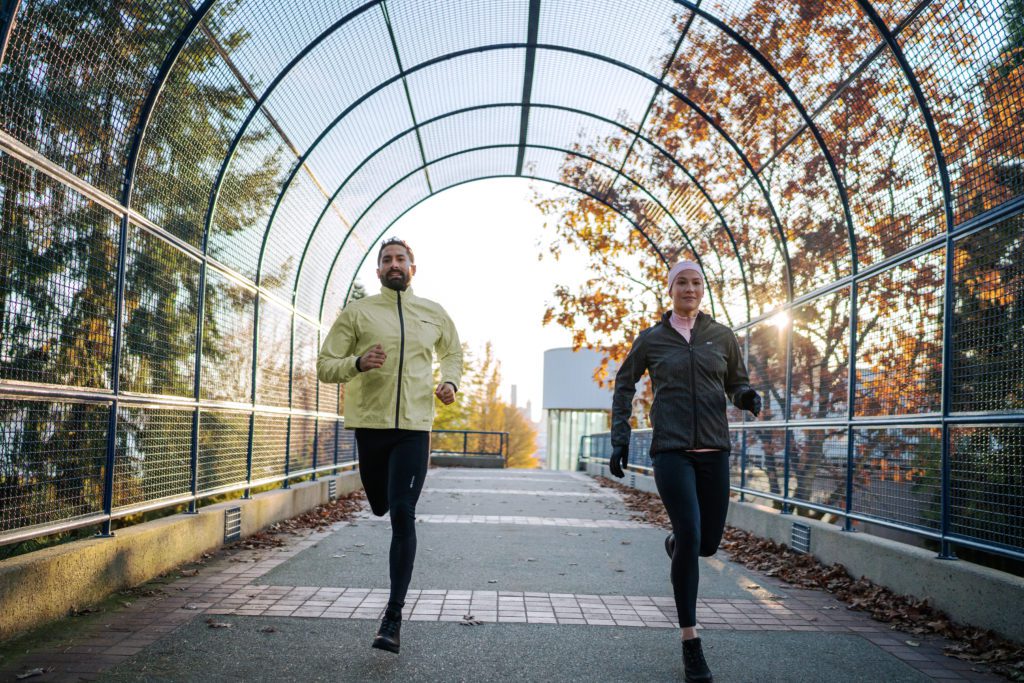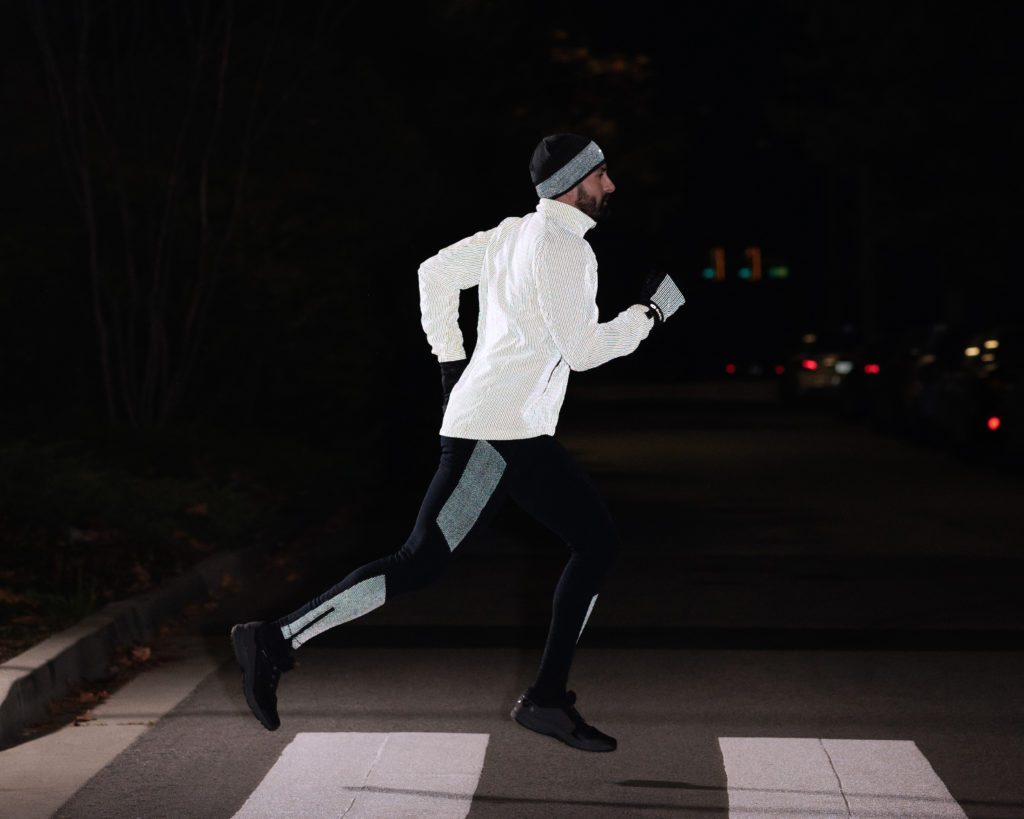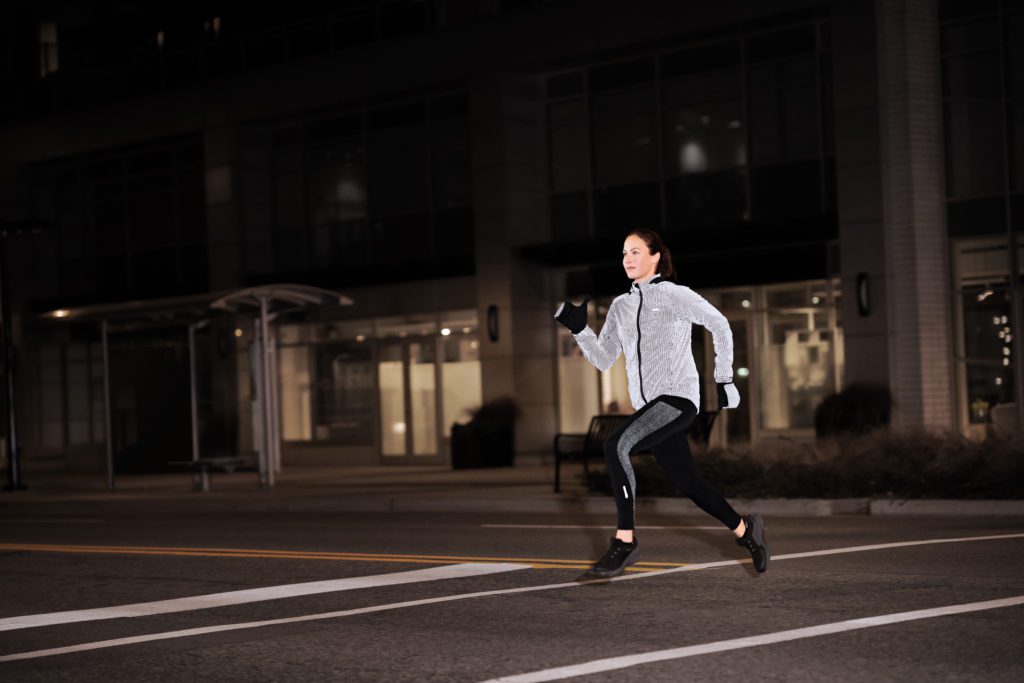Running safety is a chief concern when logging winter miles. Fear of not being sufficiently visible to other road users, namely vehicles, can often be a barrier that prevents runners from participating in the sport they love during the winter months. Sugoi’s Zap technology offers runners a solution to this problem.
Origin
Sugoi didn’t invent the award winning Zap Tech, but rather pioneered its integration within the industry. Materials Manager Richard Fournier, who boasts over 25 years of experience in garment production management, was one of the principal forces behind this integration. Fournier played a key role in the development of Zap Tech and its application to a wide range of Sugoi garments.
Zap Tech was invented by an engineer who worked outside of running. Unsatisfied with the technology used in the reflective industry, and confident that he could produce a better alternative, he branched away from some of the bigger names he was associated with. By no means a salesman or marketer, the designer was “one of those crazy engineers you see in the back room in a movie.” Fournier laughs, “He created something better, but he wasn’t big enough to float the market with it.” That’s when his relationship with Sugoi formed. This engineer found and approached the company himself, so Fournier jokes that Sugoi can’t take credit for that.
Manufacturing and Application
Measuring 91 metres long, the machine that helps create the reflective technology is anything but small. Zap Tech is applied to whole rolls of fabric inside the machine, then cut into different shapes and integrated into the individual designs. “The first process is to apply the reflective material. This is similar to the reflective material you see on almost all running gear. The material is then cured before glue is applied. Finally, the glass lenses are added to the glue and the fabric is dried. The glass lenses provide a bigger pop.”

Safety
Studies demonstrated that for a driver to see a cyclist when driving at 50 km/h in low light, they need to recognize the cyclist when they are 42 metres apart to avoid a collision. Less than 42 metres and it’s likely too late. These findings can be applied to runners, and at 42 metres, a small logo will not have the same impact as a moving human silhouette. As such, reflective items are more effective when they cover the entire body.
Despite being safety-focused, the Zap Tech doesn’t skimp on good looks. Herein lies the beauty of the lens: Zap-tech offers award-winning reflectivity, together with some of the best technological advancements on the market.

The more coverage, the more costly, so Sugoi played with the application and design to minimize the coverage and maximize its impact. They have reduced the coverage on training garments to help keep costs down, and gone all out on the jacket and tights–items runners are likely to wear in the dark. Typically Zap Tech is applied to the beanie, the back of outer layers, and the lower body. Small but mighty, these inserts provide 360 degree visibility and the light reflected from calves and sides of the legs demonstrates the distinct running motion, which is immediately recognizable.
The Challenges
Moving the technology from the reflective industry to the sports world gave way to a few challenges, namely, how to apply Zap Tech to technical materials and maintain the fabric’s original qualities. The MidZero thermal stretch fabric that Sugoi frequently uses for their tights and the DWR coating on their outerwear was tricky to incorporate. When applying the Zap Tech to the MidZero fabric, the MidZero lost its stretch (one of its most important features). The company then had to reconfigure their plan to allow the fabrics to work together. What they came up with was a new MidZero fabric, even more effective than its predecessor.
Sugoi took a different approach to the rainwear. Fournier explains, “They apply the Zap technology, then they return the fabric to the mill to apply the durable water repellent. This is the best solution and doesn’t limit the reflectivity or water-resistance.” An added bonus? This fabric is durable. In the early stages of Zap development, Sugoi ran at least two 50-wash tests and the garment remained reflective.

Having played with numerous colours, Sugoi determined that silver was the most reflective for the Zap Tech layer. But when it comes to the background pattern, colour had little to no effect on the reflectivity, opening the door to a variety of colours and patterns. In light of this, expect to see design changes within the women’s line in particular. Previously, the technology has only been applied to mono-colour fabrics, but as of 2020 Sugoi will be extending Zap Tech to vibrant new prints.
Caroline Marois, Apparel Director, explains that this is an expression. “Expect to see more of this from Sugoi–more exploration of urban-inspired storytelling and further integration of Zap Tech across the collection.” The company also ensured that the fit was gender specific. Women’s jackets include a wider waistband for additional comfort and support, and a wider finish on the legs and arms to avoid the well-known sausage effect.

What’s in store for 2020?
The Zap Tech material has been thoroughly tested and proven successful. Now Fournier continues to work closely with Amélie Mathieu, Product Manager for Active Soft Goods, on maintaining the lightweight characteristics, the breathability, and the stretch of the current fabrics, whilst enhancing other features along the way. Fournier ensures that standards are high. “A garment isn’t ready until the balance between the statistical analysis and look and feel has been optimized. Otherwise it’s just another jacket, and there are plenty of those.”
